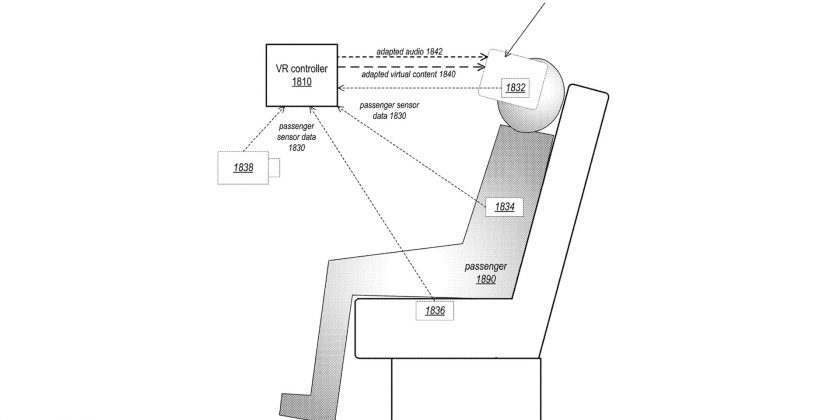While Apple continues to work on its “iPhone of Cars,” that hasn’t stopped the Silicon Valley company from working on other tech solutions related to vehicles, outside of the vehicles themselves. On May 3, 2022, Apple was granted a patent to combat motion sickness in moving vehicles, specifically autonomous ones like their planned “Apple Car.” Instead of just making the vehicle move smoother to the point of not feeling like it’s moving, Apple is going the route of virtual reality and a headset for passengers to wear.
Since we’re entering a new stage of autonomous vehicles, the idea of seats that don’t face forward and using cars as virtual offices have become the “it” ideas. There’s just one problem with those seating layouts for a fraction of potential users: motion sickness in a moving vehicle. For some, the only solution to the wooziness caused by either riding in a car facing backward or riding in a car, period, is medication while for others it’s as simple as looking in the same direction the car is moving. If reversed seats and headsets block your view and you don’t want the side effects of certain motion sickness medications, what are you going to do? Apple seems to have an idea with another recently granted patent that uses virtual reality to simulate the motions of a vehicle visually.
The idea is that, no matter what you’re facing and what virtual screens you have up, the peripheral environment will match the motion of the vehicle while in motion. The way Apple’s patent would figure out what to show, how fast, and when would work in conjunction with the sensors of the autonomous vehicle, navigation, and 3D mapping data along with preferences set by each passenger. For those who don’t get motion sickness, they get a regular virtual environment that is unaffected by vehicle motion data. For those who get motion sickness, they can set the sensors in the car to detect it and alter the virtual environment to reflect the motion of the vehicle with peripheral visual cues that are moving virtually at the same speed as the vehicle, slowed down or even sped up. It all depends on the user and how they deal with motion sickness. Another idea is to show a real world view through the headset along with the virtual content to help alleviate the issue or even prevent motion sickness from triggering in a passenger.
The patent drawings by Apple show the different environments, but figure 8 piqued our interest. It shows a seat that allows motion in conjunction with a virtual environment. It appears that Apple is planning for a “4D” virtual environment where you not only have a visual experience but also one that makes you feel motion as well. This could also potentially unintentionally trigger motion sickness as much as it might “solve” it when detected. With the vehicle’s interior sensors already looking for signs of motion sickness, the seat’s motions could be altered to reduce movement or even induce movement to help with the issue, as well. Overall, the patent covers a wide base of what a virtual environment would be like for a user in an Apple Car world, so something from this will probably see the light of day in the forever upcoming “iPhone of Cars” Apple fans clamor on and on about. Until then, these are all just virtual ideas that haven’t been fleshed out in reality. Until then, motion sickness sufferers must deal with it as they normally do right now.
Source: Read Full Article
